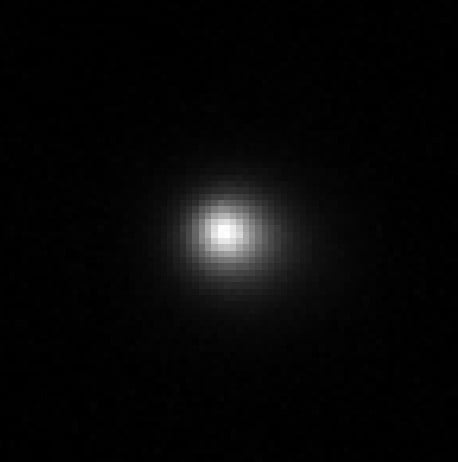Sometimes serendipity happens in science. Whether it’s an apple falling from a tree or a melting chocolate bar, some of the world’s greatest discoveries come from happy accidents, even if their stories may be apocryphal. According to a new paper on arXiv, there’s a new story to add to the archives of serendipitous scientific discoveries – Rubin happened to make observations of interstellar object 3I/ATLAS before its official discovery, while the telescope was still in its Science Validation survey, marking the earliest, high resolution images we will likely get of the comet at that time.
According to the paper, Rubin just happened to be pointing at the part of the sky where 3I/ATLAS was located during its Science Validation (SV) phase. It unknowingly took pictures of the object between June 21st (10 days before it was officially discovered) and July 7th. June 21st was even a few days before the telescope officially released its “First Look” images to the public back on June 23rd.
These observations are important because they are the earliest ones done by a high power telescope. Rubin’s 8.4m Simoyi Survey Telescope and 3.2-gigapixel Legacy Survey of Space and Time (LSST) combined to capture the highest resolution images of the comet released to date. Since the images were captured before full commissioning, the data they represented had to be run through customer data pipelines rather than the standard automated ones that will handle the terabytes of data normally created by Rubin every night.
Fraser discusses the new interstellar object, 3I/ATLAS.
There were 49 images included in the study, though some were excluded due to being captured during telescope alignments, blending with other stars, or just being out of focus. Nineteen of the images were captured during intentional SV operations.
Those images show a comet that largely behaved as expected. They provided the highest resolution proof that 3I/ATLAS is, in fact a comet, and shows cometary behavior, like a coma of gas and dust surrounding it. The apparent size of its coma grew about 58% over the observational period as it continued to approach the Sun. Interestingly, it had a sunward pointing tail. According to the paper this can be explained by “anisotropic dust emission”, and has been observed in other comets, though it is relatively rare. Several explanations are offered, including slow ejection of large particles that aren’t pushed back as quickly by the Sun’s radiation pressure or a rotational axis that nearly aligns with its orbital plane.
Perhaps not as excitingly, 3I/ATLAS doesn’t show any sign of non-gravitational acceleration like 1I/Oumuamua. That’s not to say there won’t eventually be – 1I/Oumuamua’s acceleration was first observed during its perihelion, so astronomers will be watching closely to see if the same effect happens for 3I/ATLAS when it approaches its perihelion in October. However, in an opposite twist of luck, the object itself won’t be visible at that time as it will be blocked by the Sun from September through December.
Fraser discusses the observational power of Vera Rubin and how it could change astronomy forever.
Rubin will lose sight of its slightly beforehand, on August 22nd, when it will move out of the telescope’s surveyed area of the sky. Between the final image presented in the paper and that time, the authors expect at least 100 more images of the comet to be captured, many of which will likely be high quality than the earlier sets when the telescope operators didn’t know they had such a valuable and rare object in their field of view. An even more detailed paper is sure to be forthcoming, even if it might not be as much of a surprise.
Learn More:
C.O. Chandler et al – NSF-DOE Vera C. Rubin Observatory Observations of Interstellar Comet 3I/ATLAS (C/2025 N1)
UT – The First Pictures from Vera Rubin are Here!
UT – Inbound: Astronomers Discover Third Interstellar Object
UT – Newly-Discovered Interstellar Comet is Billions of Years Older Than the Solar System
